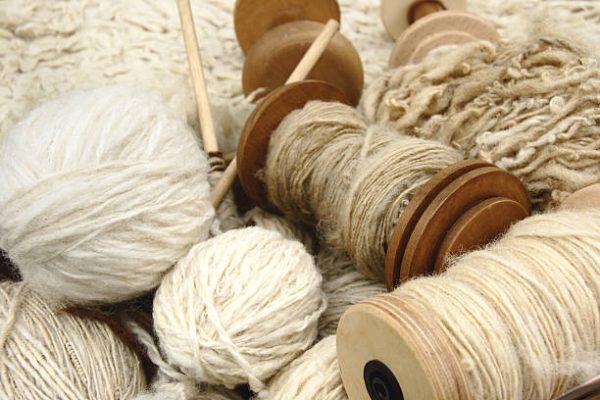In recent years, the fashion industry has undergone a significant transformation. Consumers are shifting from fast fashion to more sustainable choices. One of the key drivers of this movement is the growing appreciation for natural fabrics. These materials provide comfort and durability and align with environmentally friendly practices. In this blog, we’ll explore the appeal of natural fabrics and why they stand out in a world moving beyond fast fashion.
Understanding Fast Fashion and Its Impact
Fast fashion is characterized by cheap, trendy clothes that replicate runway styles. These garments are produced quickly and often at the expense of quality and ethics. While it allows consumers to access affordable fashion, fast fashion has numerous downsides:

- Environmental damage: Fast fashion relies heavily on synthetic fabrics like polyester, which take hundreds of years to decompose. The production of these materials also releases microplastics into waterways.
- Exploitation of labor: To cut costs, many fast fashion brands outsource production to countries with low labor standards. This often leads to poor working conditions and unfair wages.
- Overconsumption and waste: Fast fashion encourages a “buy and dispose” culture, leading to millions of tons of textile waste annually.
Moving beyond fast fashion means adopting practices and materials that promote sustainability and ethical responsibility.
What Are Natural Fabrics?
It is textiles from natural fibers, such as plants and animals. These fabrics have been used for centuries, offering a range of benefits. Common examples include:

- Cotton: Known for its breathability and softness, ideal for summer wear.
- Wool: A versatile fabric, offering warmth and durability for colder climates.
- Linen: Lightweight and moisture-wicking, perfect for hot, humid weather.
- Silk: Renowned for its luxurious texture and sheen, often used in high-end fashion.
- Hemp: A highly sustainable fabric, requiring minimal water and no pesticides.
These materials not only enhance comfort but also provide a timeless aesthetic.
The Benefits of Natural Fabrics
Eco-Friendly Production
Unlike synthetic fabrics, natural fibers are biodegradable and renewable. For example, cotton and hemp can be grown sustainably, reducing the fashion industry’s carbon footprint. Using natural fabrics helps in minimizing waste, an essential step in moving beyond fast fashion.
Durability and Longevity
They often last longer than synthetic ones. Wool and silk, for instance, maintain their shape and texture even after multiple washes. Investing in these fabrics encourages consumers to buy less, supporting a more sustainable wardrobe.
Comfort and Breathability
They are generally more breathable, reducing moisture and keeping the body cool. Linen and cotton excel in this aspect, making them perfect for everyday wear.
Hypoallergenic Properties
Many natural fabrics, such as organic cotton, are gentle on the skin. They reduce the risk of irritation and are especially suitable for people with sensitive skin or allergies.
Aesthetic and Timeless Design
Clothes made from them often have a classic appeal. The texture, drape, and natural hues of materials like silk and wool elevate any outfit. This timeless quality helps them stay in fashion for years, contrasting the short lifecycle of fast fashion trends.
Natural Fabrics in Sustainable Fashion
Promoting Circular Fashion
Circular fashion involves recycling and upcycling textiles to extend their lifecycle. Natural fabrics play a crucial role here. They can be easily repurposed, recycled, or even composted at the end of their life.
Reducing Water Pollution
Unlike synthetic fabrics, natural fibers do not shed microplastics. This reduces water pollution during the washing process, supporting healthier ecosystems.
Fair Trade and Ethical Practices
Many brands that focus on natural fabrics also prioritize fair trade. This ensures that workers are paid fairly and operate in safe working environments.
Challenges and Considerations
While natural fabrics offer numerous advantages, they come with some challenges:
- Higher Cost: Natural fabrics are generally more expensive than synthetic options. However, their longevity and quality often justify the initial investment.
- Resource-Intensive Production: Fabrics like cotton require significant water resources. Opting for organic and sustainably grown alternatives can mitigate this issue.
- Care and Maintenance: Natural fabrics often require special care. For instance, silk and wool may need dry cleaning or delicate washing.
Despite these challenges, the benefits of embracing natural fabrics outweigh the drawbacks, especially in the journey beyond fast fashion.

Conclusion: The Future of Fashion
The fashion industry is at a crossroads. As more consumers become aware of the environmental and ethical implications of their choices, the demand for sustainable options grows. Natural fabrics stand at the forefront of this change, offering an eco-friendly, durable, and timeless alternative to fast fashion.
By choosing garments made from natural fibers, consumers can enjoy high-quality clothing while contributing to a healthier planet. It’s time to move beyond fast fashion and embrace the timeless appeal of natural fabrics.
About IGREEN TEX
IGREEN TEX is a provider of fashion and textile products, offering a wide range of apparel both domestically and internationally. Our commitment to quality ensures that our products not only meet the highest standards but also promote eco-friendly practices.
IGREEN TEX VIETNAM CO LTD
Address: No. 83, A4 Street, Ward 12, Tan Binh Dist, HCMC
Tax code: 0315844409
Email: info@igreentex.com
WhatsApp/Viber/Zalo: +84 938.045.900